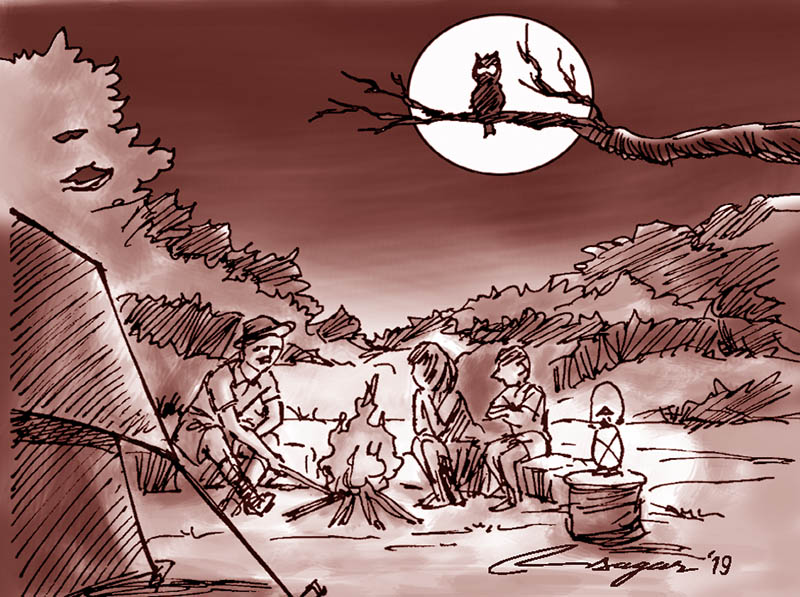Save wildlife tourism: Let’s go back to nature
While we have introduced modern amenities in a glut of our eco-friendly ventures, the nature lodges in other countries started going back to nature without light and television that add value to a perfectly natural experience
Our wildlife tourism had a head start in South Asia in the mid-1960s. We must be proud of this. Thanks to Coapman, our wildlife tourism in Chitwan started even before it was declared a national park, the first one of its kind in the country. He reportedly built a four-room hotel on a tree in the heart of Chitwan and appropriately named it Tiger Tops, inspired no doubt by Tree Top in Kenya.
People who worked with Coapman tell stories of the massive teething problem of the new-born lodge, including the lack of roads and air access from Kathmandu. And, lack of trails, tracks and roads made travel in the park a real odyssey. The lodge changed ownership and started a remarkable journey in expansion, innovation and pioneering in niche tourism that stormed the travel world. It became a household name in the hands of a brilliant marketing maverick, popularly known as Jim Edwards.
The rebirth of the lodge at the hands of the new owner, its rapid growth epitomises the rise of wildlife tourism in the sub-continent. People came from far and wide to study the success of a lodge in wildlife tourism. In many ways, this lodge is synonymous with wildlife tourism. All wildlife lodges today copy its content and style, including brochures, activities and ‘goleghar,’ round dome-roofed African building, for meals and convivial gatherings.
Nepal was not exactly numero uno in wildlife tourism, but the lodge vendors liked to believe that we were second only to Africa. Throughout the 1980s and much of 1990s, wildlife tourism flourished and became an integral part of the high-end tour packages before the Maoist war started taking a toll. Wildlife tourism became a niche product, with the pioneer lodge selling at almost US$300 per person for a one-night package in the 1990s. Big international tour operators from the US, Germany and the UK would produce their brochures for the year or years ahead based on the availability of space at this property.
Travel, charter and supermarket conglomerates like TUI and Neckermann from Germany sold their Nepal tours around Chitwan wildlife. Royal Nepal Airlines operated daily scheduled flights with its Twin Otter or Avro, obliging with additional non-scheduled or charter flights. Royal Nepal Airlines service was a big part of the success story of this lodge, which became synonymous with wildlife tourism in the country. With a short hop to Meghauly airstrip, it provided service so reliable that travellers would make international connections on arrival and departure through the Tribhuvan International Airport without a stopover in Kathmandu.
A short dramatic flight from Kathmandu would land tourists on the grassy airstrip in the middle of nowhere. Elephants would be on hand to greet them and, depending on the season, transfer them directly to the lodge or take them on an elephant safari, ending at the hotel in the heart of the jungle. During the summer months, guests travel from the airport to the lodge by Landrover and enjoy elephant safaris in the afternoon when it is cooler.
The tourist season spread from mid-September to mid-June with a three-month-long closure for monsoon. The lodge insisted on a stay of a minimum two nights to allow visitors to enjoy the wildlife experience. A one-day trip was not advisable as it left the visitors with a tinge of unfulfillment.
The daily programme included a variety of activities, such as elephant safaris, game drives, nature walks, bird watching, canoeing and stalking live tiger bait, which was banned early on in the 1980s following international opposition to the practice. The ban on tiger baiting did not, however, lessen the popularity of wildlife tourism in Chitwan, but it further augmented tourist interests as it became a more moral and ethical practice devoid of animal cruelty.
Hospitality business hinges on service. The quality of service, be it at the dining hall or on the safaris, was world-class. The dining service style harkened back to the opulent days of the Indian princes. Service staff would tip-toe in a line, moving from table to table, serving one dish after another to round off a complete meal.
The legendary hotelier known as Boris might have brought this service style from colonial India for ‘The Royal Hotel’, one of the first hotels in the country, and for his legendary restaurant ‘The Yak and Yeti,’ where a hotel by the same name stands today.
The safari guides were some of the best in the business. Their enthralling stories of the park and wildlife captivated the visitors and enticed them to repeat visits.
The lodge started selling t-shirts and knick-knacks, including tiger paw ashtrays, of clay and brass, for brand promotion and additional revenues. It also reinvented long-dead elephant polo as a stroke of marketing genius. But like tiger baiting, elephant polo today is buried in the annals of tourism and marketing history. The wildlife tourism it pioneered continues to live on in not only Chitwan and Bardia but also in India and elsewhere. While we have introduced modern amenities in a glut of our eco-friendly ventures, the nature lodges in other countries started going back to nature without light and television that add value to a perfectly natural experience.
Going back to nature, raising the standard bar high and controlling implosion of lodges around the parks might be the only way to save wildlife tourism from extinction. While we have introduced modern amenities in a glut of our eco-friendly ventures, the nature lodges in other countries started going back to nature without light and television that add value to a perfectly natural experience






